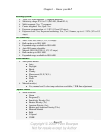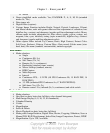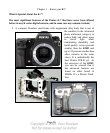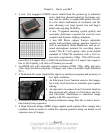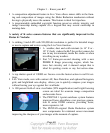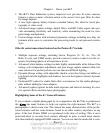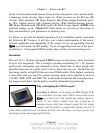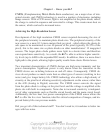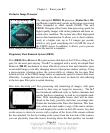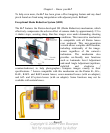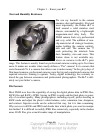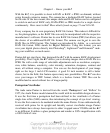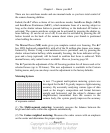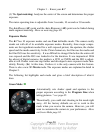
Chapter 1 - Know your K-7
Page 43
CMOS, (Complementary Metal-Oxide-Semi-conductors), are a major class of inte-
grated circuits, and CMOS technology is used in a number of electronics including
image sensors. With a CCD sensor, light is not amplified at the photo diode; rather,
the charge is carried in sequence and converted to voltage. This creates more heat on
the sensor, which can lead to increased noise.
Achieving the High-Resolution Sensor
Development of the high resolution CMOS sensor required decreasing the size of
the peripheral circuitry to maintain photo diode size. The peripheral circuitry of the
new sensor is a mere 0.13 micro-meters thick per pixel , which allows the photo di-
ode space to be maximized to over 40 percent of the pixel (typically 30-35% of the
pixel), this is the same size as photo diodes on other manufacturers' 12 megapixel
sensors. The larger photo diode gathers more light in a shorter time and therefore
can respond more sensitively. As a result, the K-7 is able to achieve higher sensitiv-
ity levels (up to 6400 in the expanded ISO mode). In addition, there is a more direct
light path to the pixels, allowing higher quality results from classic Pentax lenses.
Two important characteristics of CMOS devices are high noise immunity and low
power consumption. Significant power is only drawn when the transistors in the
CMOS device are switching between on and off states. Consequently, CMOS de-
vices do not produce as much waste heat as other types of sensors (resulting in less
noise) and give longer battery life. CMOS technology also allows a high density of
circuitry at the pixel level allowing sensitivity adjustments on the sensor, rather than
at the A/D (Analog to Digital) converter. The CMOS sensor converts the signal
from the photo diode to voltage at the pixel level and the voltage is amplified at the
photo site with built in components. Noise due to increased sensitivity is independ-
ent of other components such as flexible circuit boards and the main circuit board.
Additionally, the low heat, low power consumption of the CMOS sensor allows the
K-7 to offer the live view function, ideal for critical composition of images, and im-
proved battery life over previous models.
Did you get all of this technical stuff? You don’t need to; it translates to better im-
ages with less noise.



